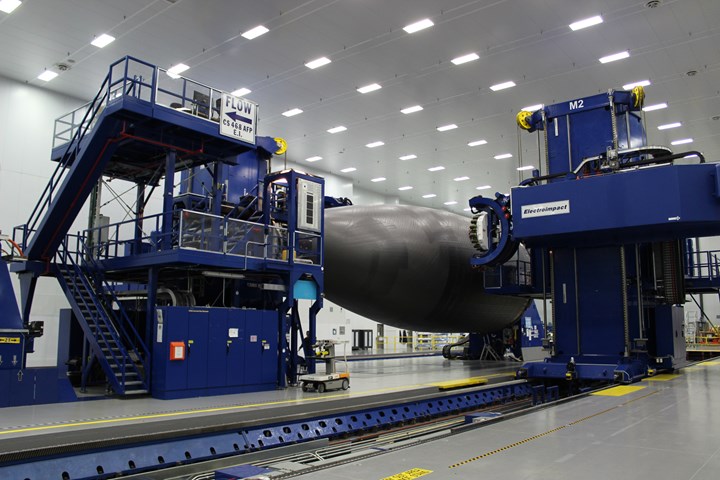Boeing said to be evaluating new twin-aisle program
Aviation Week reports that Boeing is in the early stages of developing a twin-aisle in response to the Airbus A321XLR that will use composite wing and fuselage structures.

A new aircraft from Boeing would likely depend on the use of existing composites manufacturing technologies. Pictured here is automated fiber placement (AFP) of the the forward fuselage section for the Boeing 787, performed by Spirit AeroSystems at its Wichita, Kan., U.S., facility.
Photo Credit: CW
Aviation Week reported on Feb. 2 that The Boeing Co. (Seattle, Wash., U.S.) is in the early stages of developing a new aircraft designed to challenge the Airbus A321XLR long-range, single-aisle jetliner.
According to the report, written by Guy Norris, the plane, dubbed -5X, would be based on the New Midmarket Airplane (NMA) that Boeing had on the drawing board and then shelved when the 737 MAX was grounded in 2019. Aviation Week says the -5X would be a twin-aisle that seats 250-275 passengers, with a range of 5,000 nautical miles (nm). It would be a replacement for the 757/200-300 in Boeing’s product lineup.
In order to get the plane to market quickly, the report says, Boeing would rely on established materials and manufacturing processes. The report also says the plane would feature composites in fuselage and wing structures.
The A321XLR was introduced by Airbus at the 2019 Paris Air Show and is targeted toward a 2023 entry-into-service date. It will have a range of 4,700 nm and will seat up to 244 passengers in a single-class configuration. Fuel burn will be 20% less per seat compared to other A320 Family aircraft. The A321XLR is designed to connect long-haul routes like Shanghai-Sydney and Madrid-Dubai.
Click here for the full Aviation Week report.
Related Content
-
A new era for ceramic matrix composites
CMC is expanding, with new fiber production in Europe, faster processes and higher temperature materials enabling applications for industry, hypersonics and New Space.
-
Composites manufacturing for general aviation aircraft
General aviation, certified and experimental, has increasingly embraced composites over the decades, a path further driven by leveraged innovation in materials and processes and the evolving AAM market.
-
Plant tour: Joby Aviation, Marina, Calif., U.S.
As the advanced air mobility market begins to take shape, market leader Joby Aviation works to industrialize composites manufacturing for its first-generation, composites-intensive, all-electric air taxi.
















